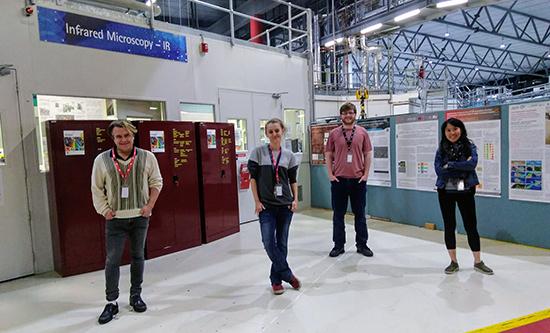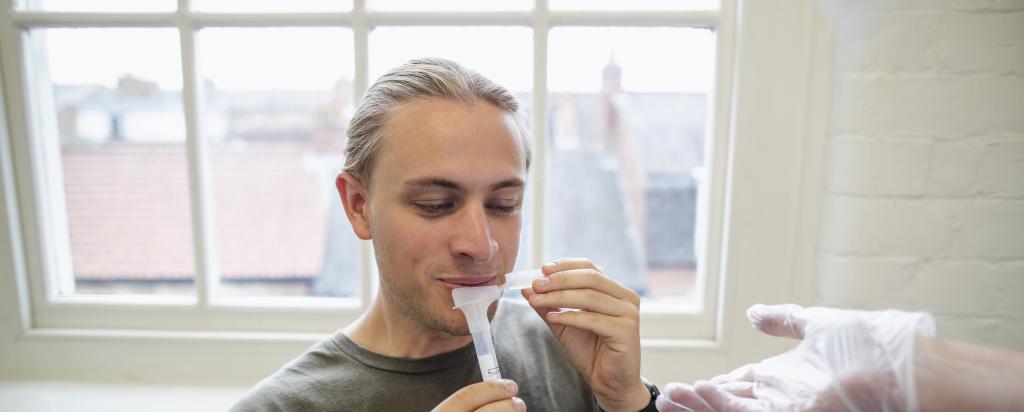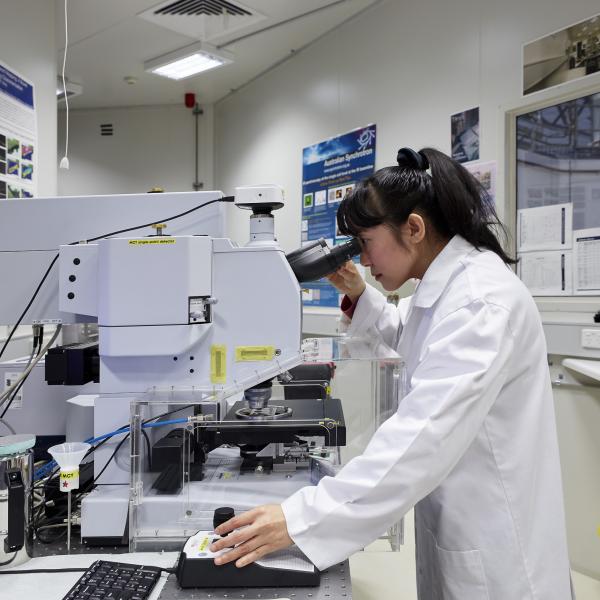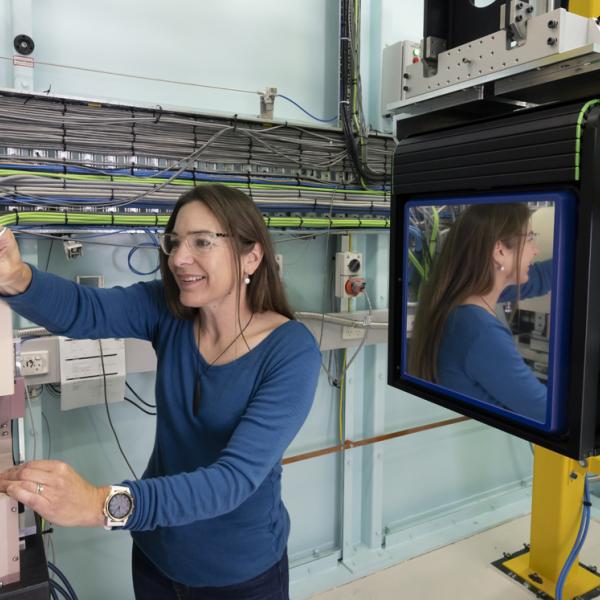

Published on the 27th May 2021 by ANSTO Staff
Key Points
-
International researchers led by Monash and the Peter Doherty Institute for Infection and Immunity, undertaken with the assistance of ANSTO's Australian Synchrotron, have achieved a proof of concept for a new, fast, saliva screening test that uses an infrared technique to confirm COVID infection
-
The unique infrared RNA signature from the SARS-CoV-2 virus was detected in the infrared spectra of the saliva samples
-
Much of the initial work was carried using the infrared spectroscopy beamline at ANSTO's Australian Synchrotron
International research led by Monash University and the Peter Doherty Institute for Infection and Immunity, undertaken with the assistance of ANSTO's Australian Synchrotron, has achieved a proof of concept for a new, fast, portable saliva screening test that uses an infrared light technology to confirm infection with SARS-CoV-2.
The research is published today in Angewandte Chemie.
Professor Bayden Wood, from the Monash University School of Chemistry, Dr Phil Heraud formerly from the Monash Biomedicine Discovery Institute, and collaborators Professors Dale Godfrey and Damian Purcell from the Peter Doherty Institute, report on a new diagnostic approach, which involves the use of a portable infrared instrument to detect the SARS-CoV-2 virus in saliva.
The team identified a signature of the infectious agent in the infrared spectra of saliva from 27 out of the 29 SARS-CoV-2-infected human subjects who presented at Royal Melbourne Hospital with COVID-19-like symptoms.
Although multiple techniques were used in validating the approach, Professor Wood carried out much of the initial work using the infrared microspectroscopy beamline at the Australian Synchrotron (AS), with support from the beamline team.
"To develop the method, the team had to first map the infrared signature of COVID-19, leveraging technology and processes developed by the Infrared Microspectroscopy (IRM) Beamline team at the ANSTO Synchrotron, said Dr Keith Bambery, Manager of the Microscopy Beamline group.
“The infrared microscopy experiments on the beamline were important because they enabled the researchers to confirm that spectroscopic signatures could be used to identify an infectious agent,”
“Although the beamline would never be used for widespread testing, it provided the basis for the possible development of portable spectroscopy instruments in future.”
“Bayden and his team are very competent using the instrument but our team, and Dr Pimm Vongsvivut, in particular, provided support,” said Bambery.
“Our facility, which is the only one of its kind in Australia, allows Australian scientists to be global leaders in technology and innovation.”

(Left to right) Prof Bayden Wood (Monash), Dr Kamaila Kochan (Monash), Dr Dale Christensen (ANSTO) and Dr Pimm Vongsvivut (ANSTO) standing near the infrared microspectroscopy beamline
The measurements performed at the AS were recorded from highly purified clusters of virus, provided by the team at the Peter Doherty Institute. The unique infrared RNA signature from the SARS-CoV-2 virus was then detected in the infrared spectra of the saliva samples recorded using the portable instrument.
“The most significant advantages of using this infrared-based technology on saliva samples, include the speed and ease with which the test can be performed, its affordability, and the reduced risk to both patients and healthcare workers,” said Professor Wood.
The scientists say this is very encouraging preliminary research and are keen to see further testing with a larger patient cohort to better understand the specificity of this approach.
A portable infrared spectrometer was modified to enable high throughput screening enabling the samples to be rapidly scanned in a contactless mode without having to clean the instrument between measurements.
Professor Wood estimates that this technique could be capable of screening 5000 samples per day per instrument, with results for each sample being ready in five minutes.
Dr Heraud said because the infrared light interacted with the vibrations of molecules, it could be used to generate a spectrum that represented a unique chemical fingerprint of the sample that was then processed using machine learning algorithms.
“The approach has significant advantages over the standard Real Time Reverse Transcription Polymerase Chain Reaction (RT-PCR) that is the current gold standard for detection,” said Professor Godfrey.
“As we know, this requires that samples are sent to a dedicated laboratory and results take a day or more”.
According to Professor Purcell, the proposed new test also avoids the discomfort associated with nasopharyngeal swabs, an advantage that could improve community participation in testing.
“A person can contribute the sample by simply dribbling into a sterile container,” he said.
“The result can be derived in less than five minutes and a rapid result minimises the delay in determining if quarantine is required, therefore minimising the risk of further spread of infection.”
A similar infrared technique known as Attenuated Total Reflectance (ATR) spectroscopy has previously been used by Monash researchers to detect malaria and hepatitis. The new transflection infrared-based approach offers triple the absorbance and hence interrogates more saliva to detect pathogens compared to the traditional ATR technology.
The speed and versatility of the technique have potential use for point-of-care screening at airports, sporting venues, universities or schools, to triage patients for RT-PCR testing.
Other contributors to the research included the University of Melbourne, Royal Melbourne Hospital, the Dublin Institute of Technology (Ireland), the University of Strathclyde (Scotland), Elettra-Sincrotone Trieste (Italy), and the Area Science Park Trieste (Italy).



